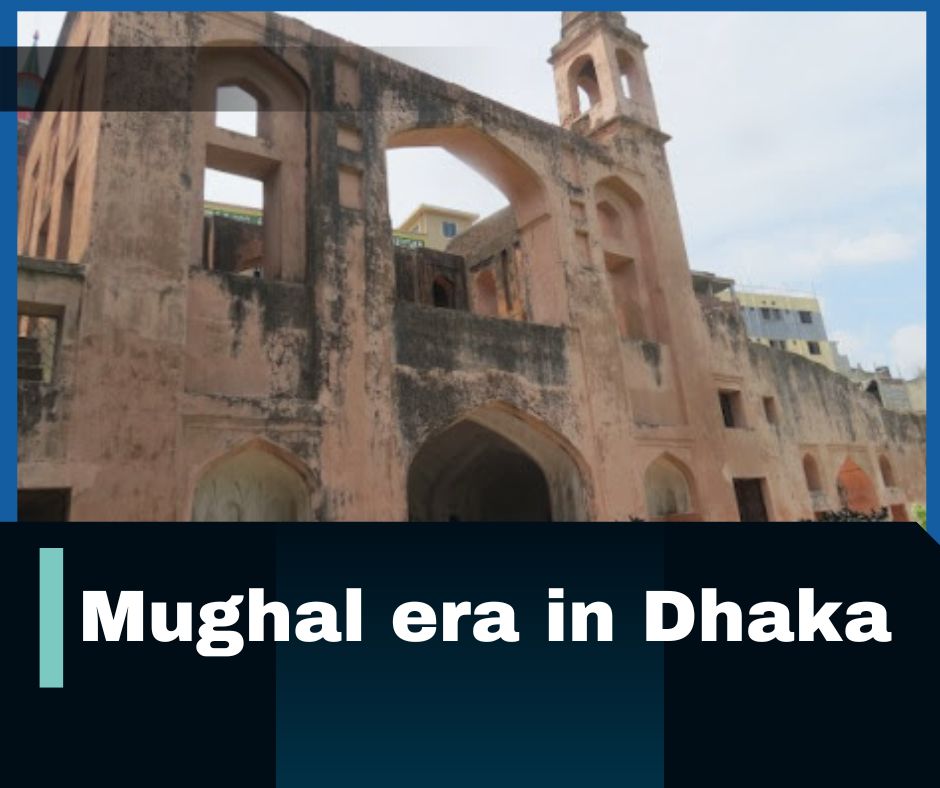Mughal era in Dhaka
- by Corporate Bangladesh
- August 29, 2024
- views

Dhaka experienced significant population growth during the Mughal era, driven by its economic prosperity and political stability.
Dhaka experienced significant population growth during the Mughal era, driven by its economic prosperity and political stability. Dhaka was home to a diverse population, including Bengali Muslims, Hindus, Armenians, and Europeans. This diversity enriched the city’s cultural fabric.
Dhaka’s architectural landscape during the 18th century was heavily influenced by Mughal aesthetics. The city’s skyline was dominated by majestic mosques, ornate palaces, and sprawling gardens, reflecting the grandeur of Mughal design. The Lalbagh Fort, though unfinished, remains one of the most iconic examples of this era’s architecture.
In addition to Lalbagh Fort, other notable structures include the Ahsan Manzil and the Hussaini Dalan, which served as a significant center for the Shia Muslim community. These buildings not only represent the artistic achievements of the time but also stand as symbols of Dhaka’s rich cultural heritage.

Life in 18th century Dhaka was characterized by a vibrant mix of cultures, with people from different backgrounds coexisting and contributing to the city’s dynamic atmosphere. The streets were lively with traders, artisans, and laborers, all contributing to the city’s economy. The social structure was hierarchical, with a clear distinction between the wealthy elite and the working classes.
Festivals played a significant role in the social life of Dhaka’s residents. Religious and cultural festivals, such as Eid, Durga Puja, and Poush Mela, were celebrated with great enthusiasm, bringing people together and fostering a sense of community. These events were not only occasions for religious observance but also for cultural expression, with music, dance, and food playing central roles.


